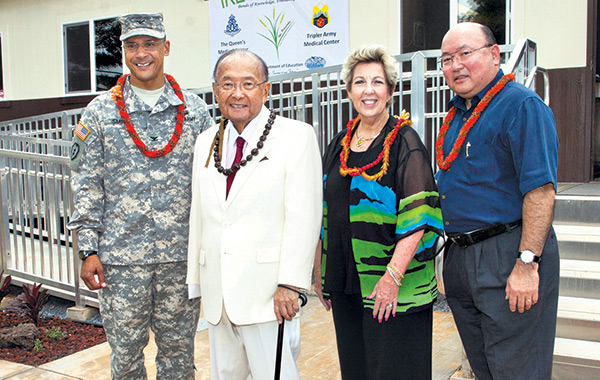Counseling Center Opening Doors At Wahiawa Elementary
The keiki counseling program at Wahiawa Elementary School has a new home to better help students deal with stress and other emotional issues.
Known as Ike Pilialoha (bonds of love) and run from a new mobile unit on campus, it’s a joint effort by the state DOE, The Queen’s Medical Center and Tripler Army Medical Center’s School Behavioral Health Team (SBHT).
“These partnering agencies are joining resources for the benefit of our local and military residents,” stated Dr. Stan Whitsett, SBHT clinical director. “The grand opening is just a celebration of this accomplishment.”
Ike Pilialoha is the first Army behavioral health program outside of a military base and is expected to spur more Army/civilian programs.
“The Queen’s Medical Center chief executive officer, Art Ushijima, heard about SBHT’s program, stepped up and offered to work with us,” said Whitsett. “Queen’s agreed to provide a matching team of professionals to provide care to the non-military children in the off-post schools.”
The program offers a range of services including behavioral health evaluation, prevention programs, treatment and workshops to teach parents, teachers and students how to identify and deal with emotional issues. Tripler’s behavioral teams consists of two child and adolescent psychiatrists, five social workers and two psychologists.
Studies have shown that multiple military deployments and economic hardships can have a negative effect on children.
Since the program began in November, 17 civilian and 10 military children have been treated. The military children were seen by Tripler counselors while children of civilian families are seen by Queen’s Medical Center staff.
“Everyone has an essential role to play. Whatever is going to benefit the child and the environment that child lives in, that is what drives these programs,” Whitsett said.
“The commitment that our teams have to this pro- gram and to the children and their families is extraordinary.”






